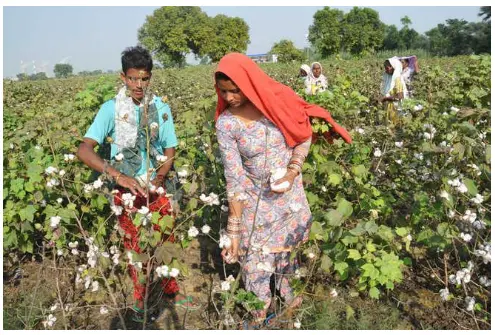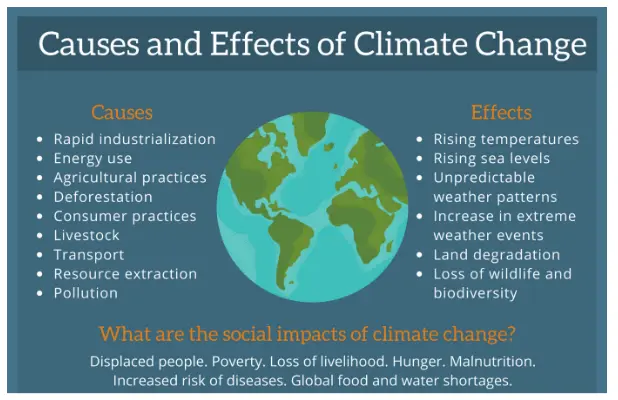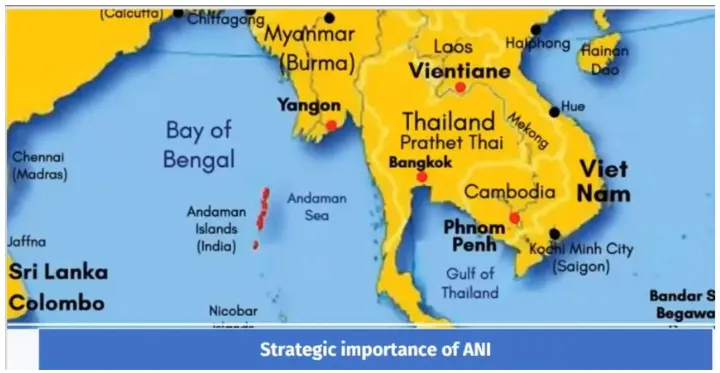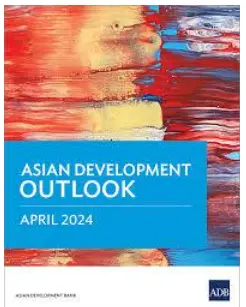Monday, 22nd April 2024
Addressing the Plastic Waste Crisis
In News: Before the commencement of week-long negotiations in Toronto, Canada, involving 192 countries to advance global efforts in eliminating plastic pollution, India advocates for the regulation rather than complete elimination of single-use plastics.
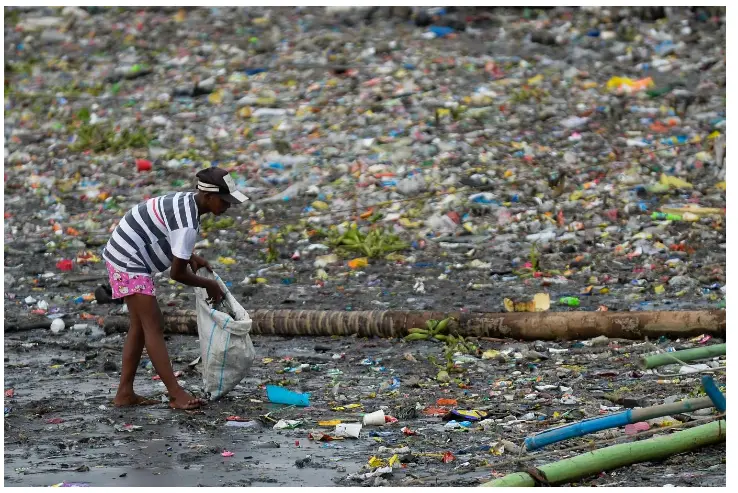
India's Plastic Waste Management Amendment Rules (2021)
- Ban on Single-Use Plastics:
- In 2022, India implemented the Plastic Waste Management Amendment Rules (2021), prohibiting 19 categories of single-use plastics.
- Defined as disposable plastic goods intended for single use, including items like plastic cups, spoons, earbuds, and decorative thermocol.
- Selective Ban Criteria:
- Excluded from the ban are plastic bottles and multi-layered packaging boxes, such as those used in milk cartons.
- The decision is based on a report by an expert committee that evaluated utility and environmental impact.
- Incomplete Coverage:
- The ban addresses only about 11% of single-use plastic in India.
- Enforcement varies nationally, with many outlets continuing to sell banned items.
Global Efforts to Combat Plastic Pollution
- UN Resolution:
- The United Nations Environment Assembly (UNEA) passed a resolution in 2022 to "end plastic pollution."
- Negotiating a Global Treaty:
- An Intergovernmental Negotiating Committee (INC) is working towards a legally binding global treaty on plastic production and use.
- After extensive discussions, no consensus has been reached.
- Agenda of Toronto Meeting:
- Countries are set to deliberate on various issues, including "problematic and avoidable plastic products."
- Focus areas include reducing production, removing products from the market, and promoting sustainable alternatives.
Analysis by CSE
- Resistance to Production Reduction:
- Oil, gas, and plastic-producing nations show reluctance to reduce primary/virgin plastics production.
- Some countries prioritize managing plastic waste over controlling production, citing economic interests.
- Divergent National Positions:
- The EU advocates for restricting the production and sale of certain plastic categories.
- The US aligns with India, proposing that countries develop their own lists of problematic plastics.
- India's Stance:
- India supports regulating rather than outright banning the production and sale of problematic plastics.
- Agrees to adopt science-based criteria for identifying such plastics.
Source: TH
Insurance Sector in India
In News: As of April 1, the Insurance Regulatory and Development Authority of India (IRDAI) has eliminated the age restriction for buying health insurance policies.
Insurance Sector in India
- Industry Growth:
- India's insurance sector experiences significant upward growth, ranking fifth globally in emerging insurance markets.
- Life insurance market in India grows at a rate of 32-34% annually.
- Market Landscape:
- India's insurance industry comprises 57 companies, with 24 in life insurance and 34 in non-life insurance.
- Life Insurance Corporation (LIC) is the sole public sector company in the life insurance segment.
- Regulation:
- The Insurance Regulatory and Development Authority of India (IRDAI) oversees and regulates the insurance sector.
- IRDAI ensures compliance with regulations, protects policyholders' interests, and maintains market stability.
Challenges Faced by the Insurance Sector in India
- Low Penetration and Awareness:
- Despite increasing financial awareness, insurance penetration remains low at 4%.
- Limited awareness about insurance benefits contributes to a large uninsured population.
- Distribution Challenges:
- Inadequate infrastructure and distribution networks restrict access to insurance products, particularly in rural areas.
- Regulatory Constraints:
- Stringent regulations, while essential for consumer protection, can hinder innovation and growth.
- Fraud and Mis-selling:
- Instances of fraud and mis-selling undermine consumer trust in insurance products.
- Technological Adaptation:
- Adopting new technologies poses challenges for traditional insurers in enhancing customer experience and streamlining operations.
- Underwriting Risks:
- Accurate risk assessment and pricing are essential for sustainability, but inadequate data can lead to mispricing.
- Competitive Landscape:
- Intense competition from domestic and foreign players necessitates differentiation and adaptation.
- Healthcare Inflation:
- Rising healthcare costs pose challenges for health insurance providers in managing claims.
- Macro-economic Factors:
- Economic fluctuations impact investment returns and profitability.
- Product Innovation and Customization:
- Developing innovative and customized products that meet diverse consumer needs is a continuous challenge.
FDI in the Insurance Sector
- The insurance sector has attracted Rs 54,000 crore in foreign direct investment (FDI) over nine years.
- FDI limits increased from 26% in 2014 to 74% in 2021, facilitating greater foreign investment.
News Summary
- IRDAI removes age limit for purchasing health insurance policies, effective from April 1.
- Aimed at extending health benefits to senior citizens previously ineligible for coverage.
- Health insurance providers mandated to develop specialized policies and dedicated channels for seniors' needs.
- Encourages tailored products to address specific age-related requirements, fostering inclusivity in healthcare.
Source: TH
Advance Pricing Agreements
In News: During the fiscal year 2023-24, the Central Board of Direct Taxes (CBDT) has accomplished a significant achievement by entering into 125 Advance Pricing Agreements (APAs).
Understanding Advance Pricing Agreements (APAs)
- About APAs:
- APAs are formal agreements between taxpayers and tax authorities regarding transfer prices.
- They help businesses mitigate the risk of tax authorities challenging their transaction prices.
- Types of APAs:
- Unilateral APAs:
- Manage risks for transactions between domestic entities, but do not guarantee protection against double taxation for transactions with foreign entities.
- Generally, have shorter proceedings compared to other APA types.
- Bilateral APAs:
- Address risks for transactions between domestic and foreign entities, ensuring avoidance of double taxation.
- Proceedings are lengthier as agreement from two states is required.
- Multilateral Arrangements:
- Mitigate risks for transactions involving related entities across three or more states.
- Offer protection for complex transactions, though proceedings are more time-consuming.
Key Features of APAs:
- Voluntary process supplementing other mechanisms like appeals and Double Taxation Avoidance Agreements (DTAAs).
- Maximum term of 9 years, inclusive of prospective and retrospective periods if opting for roll-back mechanism.
- Ensures confidentiality of sensitive business data.
- Statistical data and summaries are published without disclosing entity names.
Importance of APAs for Businesses:
- Provides tax certainty for determining international transaction prices.
- Reduces the risk of double taxation through bilateral or multilateral agreements.
- Lowers compliance costs and transfer pricing audit risks.
- Streamlines documentation requirements, reducing record-keeping burden.
India-Mauritius DTAA Amendment:
- Principal Purpose Test (PPT):
- Introduces PPT to prevent treaty abuse by denying benefits if obtaining them was the primary purpose of a transaction.
- Article 27B:
- Adds Article 27B defining entitlement to benefits and conditions for denying treaty benefits.
- Focus on Preventing Treaty Abuse:
- Aims to curb tax evasion and avoidance through DTAA abuse, ensuring benefits are not misused.
- Uncertainty Regarding Past Investments:
- Lack of clarity on the treatment of past investments under the new provisions of the DTAA.
- Ministry of Finance yet to issue clarification on applicability to existing investments.
|
UPSC Previous Year Questions Prelims (2018) Q. With reference to India’s decision to levy an equalization tax of 6% on online advertisement services offered by non-resident entities, which of the following statements is/are correct?
Select the correct answer using the code given below: (a) 1 only Ans: (d) |
Source: PIB
Tamil Nadu's Economic Transformation
In News: Tamil Nadu is experiencing a notable shift in its economic landscape, transitioning from its agricultural origins to embrace a more diversified and industrialized economy.
Factors Driving Tamil Nadu's Economic Transformation
- Decentralised Industrialisation:
- Economic transformation led by medium-scale businesses spread across various sectors.
- Clusters development fostering a diverse and balanced economic landscape.
- Cluster-Based Development:
- Concentration of businesses in specific geographic areas to boost productivity and regional efficiency.
- Successful clusters in TN include Tirupur, Coimbatore, and Sivakasi, creating employment and fostering entrepreneurship.
- Diversification Beyond Agriculture:
- Reduction in workforce dependency on farming due to employment opportunities in cluster towns.
- Expansion of economic base through alternative employment sectors.
- Entrepreneurship from Below:
- Entrepreneurs from diverse backgrounds driving industrialisation and economic growth.
- Contribution from ordinary peasant stock and provincial mercantile castes.
- Community Involvement:
- Diverse community engagement contributing to industrialisation and economic diversification.
- Social Progress Indices:
- High social progress indices resulting from investments in public health and education.
- Conducive environment for economic growth and improved living standards.
Understanding the Decentralised Industrialisation Model
- About the Model:
- Systematic distribution of powers and functions across various societal agents.
- Encompasses political and economic aspects such as decision-making, ownership, and location of production.
- Key Features:
- Dispersion of industrial activities to rural and peri-urban areas.
- Promotion of small and cottage industries for local entrepreneurship.
- Emphasis on labour-intensive methods for employment generation.
- Utilisation of local resources for sustainable development.
- Interdependence among village industries for economic ecosystem.
- Benefits:
- Balanced regional development and reduced spatial inequalities.
- Inclusive growth and economic opportunities for rural communities.
- Resilience to economic shocks and sustainable development.
- Community participation and ownership in development.
- Challenges:
- Limited technical capacity leading to inefficiency.
- Increased costs due to loss of economies of scale.
- Non-uniform availability of skilled labour across regions.
|
UPSC Previous Year Questions Prelims (2015) Q. In the ‘Index of Eight Core Industries’, which one of the following is given the highest weight? (a) Coal production Ans: (b) Mains (2017) Q.1 “Industrial growth rate has lagged behind in the overall growth of Gross-Domestic-Product (GDP) in the post-reform period” Give reasons. How far are the recent changes in Industrial Policy capable of increasing the industrial growth rate? Mains (2014) Q.2 Normally countries shift from agriculture to industry and then later to services, but India shifted directly from agriculture to services. What are the reasons for the huge growth of services vis-a-vis the industry in the country? Can India become a developed country without a strong industrial base? |
Source: TH
Corals
In News: The US National Oceanic and Atmospheric Administration (NOAA) recently announced that extraordinary ocean temperatures have triggered the onset of the fourth global mass coral bleaching event.
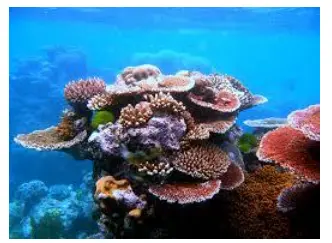
Understanding Corals and Coral Bleaching
- Introduction to Corals
- Corals are sessile animals that attach themselves to the ocean floor.
- They share a symbiotic relationship with single-celled algae called zooxanthellae.
- Each coral animal, known as a polyp, lives in colonies of genetically identical polyps.
- Types of Corals
- Corals are classified as hard or soft, with hard corals being the builders of coral reefs.
- Hard corals have stony skeletons made of limestone produced by coral polyps.
Significance of Corals
- Coral reefs are crucial marine ecosystems, housing thousands of marine species.
- They are often referred to as "rainforests of the sea" due to their biodiversity.
Understanding Coral Bleaching
- Coral bleaching occurs when corals experience stress from changes in temperature, pollution, or ocean acidity.
- Stressed corals expel zooxanthellae, resulting in a bleached appearance.
- This disrupts the symbiotic relationship vital for coral survival.
- Causes of Coral Bleaching
- Change in Ocean Temperature
- Increased temperatures due to climate change are the primary cause of coral bleaching.
- Runoff and Pollution
- Storm runoff can dilute ocean water and carry pollutants, bleaching nearshore corals.
- Overexposure to Sunlight
- High solar irradiance during high temperatures contributes to bleaching in shallow water corals.
- Extremely Low Tides
- Exposure to air during low tides can cause bleaching in shallow corals.
- Change in Ocean Temperature
Source: IE
Panhala Fort
In News: The Archaeological Survey of India (ASI), Mumbai Circle, commemorated World Heritage Day at Panhala Fort.

About Panhala Fort
- Located in Maharashtra, Panhala Fort holds significant historical importance in the state's history.
- Locally known as the abode of serpents and associated with the sage Parashar.
- Strategically positioned near trade routes connecting the Sahyadri mountains, Deccan plateau, and Konkan coast, attracting attention from various dynasties.
- Originating back to the 11th century CE under the rule of the Shilahara dynasty ruler Bhoja.
- Witnessed transitions of power under the Yadavas of Devgiri, Bahamani of Bidar, Adilshahi of Bijapur, Marathas, and Mughals.
Features:
- The fort comprises three double-walled gates, with the eastern gate, Chaar Darwaja, now in ruins.
- The main entrance, Teen Darwaja, on the western side, adorned with a pointed arch opening. A Persian inscription from Sultan Ibrahim Adil Shah I's reign in 1547-8 CE adorns its inner gate.
- The Wagh Darwaja, on the north, appears concealed by natural scarp, leading to a narrow pathway down the hill.
- Notable structures include the Nayikinicha Sajja or the dancing girl’s tower, adorned with delicate stucco mouldings during Ibrahim Adil Shah II's reign in 1591 CE.
- Ambarkhana, situated at the fort's center, consists of three buildings named Ganga, Yamuna, and Saraswati, each with sixteen bays and a flat vault with a hole on top.
- Another granary, Dharma Kothi, located to the west, featuring a single staircase leading to its top.
- Sajja Kothi, a double-storied structure, occupying a prominent position on the hill, dated to the reign of Bijapur King Ibrahim Adilshah in 1607-08 CE.
Source: TH
Indelible Ink
In News: As the Lok Sabha elections draw near, the iconic symbol of Indian polls emerges ubiquitously – a left hand bearing a purple-black mark of indelible ink, with only its index finger extended.
About Indelible Ink
- It contains silver nitrate, a colorless compound that becomes visible when exposed to ultraviolet light, including sunlight.
- The higher the concentration of silver nitrate, the better the quality of the ink.
- It can remain resistant to soap, liquids, home-cleansing agents, detergents, etc., for up to 72 hours after application.
- This water-based ink also contains a solvent like alcohol to facilitate faster drying.
- The precise protocol for making this ink, including its chemical composition and the quantity of each constituent, is not widely known.
- The indelible ink was first manufactured at the request of the Election Commission of India by the government's Council of Scientific & Industrial Research (CSIR).
- Mysore Paints & Varnish Ltd. has been licensed to manufacture the ink since 1962.
- It is exported to over 25 countries, including Canada, Ghana, Nigeria, Mongolia, Malaysia, Nepal, South Africa, and the Maldives.
- The Representation of the People Act (RoPA) of 1951 mentions the use of indelible ink.
- Section 61 of the Act states that rules may be made for marking the thumb or any other finger of every elector who applies for a ballot paper before voting at a polling station.
Source: IE
Euvichol-S
In News: Recently, the World Health Organization (WHO) has granted prequalification to a novel oral vaccine for Cholera known as Euvichol-S.

About Euvichol-S
- Euvichol-S is an inactivated oral vaccine designed to combat Cholera.
- It represents the third product within the same family of cholera vaccines listed in the WHO prequalification.
- This vaccine offers a simplified formulation compared to the oral cholera vaccines (OCV) Euvichol and Euvichol-Plus.
Key Facts about Cholera
- Cholera is an acute diarrhoeal disease caused by the bacterium Vibrio cholerae.
- It poses a significant global health threat, reflecting disparities in social development and public health infrastructure.
- Symptoms include profuse watery diarrhoea, vomiting, leg cramps, among others.
- The disease spreads rapidly in areas lacking proper sewage and drinking water treatment.
What is vaccination?
- Vaccination is a straightforward, safe, and efficient method of safeguarding against harmful diseases before encountering them.
- It harnesses the body's natural defenses to develop resistance against specific infections, thereby bolstering the immune system.
Source: FE
Llama 3
In News: Meta recently unveiled its most advanced Large Language Model (LLM), dubbed the Meta Llama 3.

About Llama 3
- Llama, or Large Language Model Meta AI, represents a family of LLMs unveiled by Meta AI in February 2023.
Features
- Touted as the most advanced model, boasting significant advancements in performance and AI capabilities.
- Built on the Llama 2 architecture, which offers two sizes: 8B and 70B parameters. Each size includes a base model and an instruction-tuned version tailored for specific tasks.
- The instruction-tuned variant is optimized for empowering AI chatbots engaged in user conversations.
- Supports context lengths of up to 8,000 tokens, enabling enhanced interactions and handling of complex inputs compared to its predecessors, Llama 2 and Llama 1.
- Compatible with various platforms including Facebook, Instagram, WhatsApp, Messenger, and the web. Meta has seamlessly integrated LLM into the Hugging Face ecosystem, making it easily accessible to developers.
Usage
- Currently available in English across the United States on WhatsApp, representing Meta AI's initial deployment.
Source: IE
Step back: On Iran-Israel tensions
In News: A recent article discusses the geopolitical apprehensions arising from increased tensions in the unstable West Asia region following Iran's drone and missile strike on Israel.
Historical Background of Iran-Israel Relations
- Pre-1979 Iran-Israel Ties:
- Iran recognized Israel shortly after its formation in 1948.
- Under Shah Mohammad Reza Pahlavi, Iran maintained diplomatic ties with Israel and sold oil to Israel.
- Israel adopted the "periphery doctrine" to form alliances with non-Arab, pro-Western countries like pre-revolution Iran.
- 1979 Revolution:
- Iran's Islamic Revolution led to a shift in its stance towards Israel, viewing it as an occupier.
- Ayatollah Khomeini termed Israel as "Little Satan" and the United States as "Great Satan."
- Shadow War after 1979:
- Tensions escalated with both countries engaging in indirect conflicts through proxies.
- Israel targeted Iranian facilities, while Iran supported anti-Israel militant groups like Hezbollah and Hamas.
Key Events Leading to Iran’s Attack on Israel
- Withdrawal from Iran's Nuclear Deal:
- US withdrawal from the nuclear deal heightened tensions.
- Assassination of General Soleimani:
- Israel welcomed the assassination, escalating hostilities.
- Hamas Missile Attack:
- Hamas launched attacks on Israel, prompting Israeli airstrikes.
- Israel Raids on Gaza:
- Israel conducted raids on medical facilities, exacerbating tensions.
- Houthi Group's Red Sea Incident:
- Houthi group's actions in the Red Sea strained relations further.
- Airstrike on Iranian Embassy:
- Suspected Israeli airstrike on the Iranian embassy in Damascus heightened tensions.
- Iran's Missile Attack on Israel:
- Iran's direct missile attack on Israel marked a significant escalation.
Impact of Iran-Israel War on the World**
- Possible Israeli Response:
- Fear of regional escalation due to Israel's potential retaliation.
- Disruption of Oil Supplies:
- Conflict could disrupt global oil supplies, affecting economies worldwide.
- Inflation and Capital Outflow:
- Geopolitical tension could lead to inflation and capital flight from riskier assets.
- Trade and Travel Disruptions:
- Aviation and shipping sectors may face disruptions, affecting global trade.
Possible Solutions to De-escalate Conflict
- Sustainable Ceasefire and Two-State Solution:
- Immediate ceasefire in Gaza and pursuit of a two-state solution.
- Dialogue and Diplomacy:
- International mediation to facilitate direct talks between Iran and Israel.
- Addressing Nuclear Concerns:
- Iran adhering to nuclear agreements and allowing inspections.
- Regional Cooperation:
- Promoting cooperation within regional frameworks to address security concerns.
- Long-Term Vision for Middle East:
- Establishing comprehensive security architecture and addressing underlying issues.
- Normalization of Relations:
- Steps towards normalization of diplomatic ties between Iran and Israel.
Conclusion
The instability in the Middle East poses global challenges, emphasizing the need for diplomatic solutions to prevent further escalation and promote peace and stability in the region.
|
UPSC Previous Year Questions Prelims (2017) Q. Mediterranean Sea is a border of which of the following countries? (2017)
Select the correct answer using the code given below: (a) 1, 2 and 3 only Ans: C Prelims (2015) Q. Which one of the following countries of South-West Asia does not open out to the Mediterranean Sea? (a) Syria (b) Jordan (c) Lebanon (d) Israel Ans: B Prelims (2018) Q. The term “two-state solution” is sometimes mentioned in the news in the context of the affairs of (a) China (b) Israel (c) Iraq (d) Yemen Ans: B Mains (2018) Q. “India’s relations with Israel have, of late, acquired a depth and diversity, which cannot be rolled back.” Discuss. |
Source: TH
Share the article
Edukemy’s Current Affairs Quiz is published with multiple choice questions for UPSC exams
MCQ
Get Latest Updates on Offers, Event dates, and free Mentorship sessions.

Get in touch with our Expert Academic Counsellors 👋
Frequently Asked Questions
UPSC Daily Current Affairs focuses on learning current events on a daily basis. An aspirant needs to study regular and updated information about current events, news, and relevant topics that are important for UPSC aspirants. It covers national and international affairs, government policies, socio-economic issues, science and technology advancements, and more.
UPSC Daily Current Affairs provides aspirants with a concise and comprehensive overview of the latest happenings and developments across various fields. It helps aspirants stay updated with current affairs and provides them with valuable insights and analysis, which are essential for answering questions in the UPSC examinations. It enhances their knowledge, analytical skills, and ability to connect current affairs with the UPSC syllabus.
UPSC Daily Current Affairs covers a wide range of topics, including politics, economics, science and technology, environment, social issues, governance, international relations, and more. It offers news summaries, in-depth analyses, editorials, opinion pieces, and relevant study materials. It also provides practice questions and quizzes to help aspirants test their understanding of current affairs.
Edukemy's UPSC Daily Current Affairs can be accessed through:
- UPSC Daily Current Affairs can be accessed through Current Affairs tab at the top of the Main Page of Edukemy.
- Edukemy Mobile app: The Daily Current Affairs can also be access through Edukemy Mobile App.
- Social media: Follow Edukemy’s official social media accounts or pages that provide UPSC Daily Current Affairs updates, including Facebook, Twitter, or Telegram channels.

